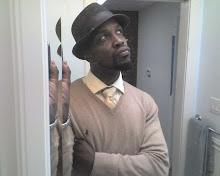Healthy conversation at Brooklyn salon
BY JOYCE SHELBY DAILY NEWS STAFF WRITER
Tuesday, February 5th 2008, 4:00 AM
BY JOYCE SHELBY DAILY NEWS STAFF WRITER
Tuesday, February 5th 2008, 4:00 AM

In her 40 years as a stylist, Erma Green has done much more than women's hair: She's had countless heart-to-heart talks with her clients.
"I explain things to them. They explain things to me. My customers and me, we talk," Green said diplomatically, unwilling to divulge a single confidence she has learned at her Bedford-Stuyvesant shop, Al's House of Style on Halsey St.
From now on, one of the things Green will be discussing with customers is heart health.
Last week, she and three other stylists at her shop attended a training session conducted by the Arthur Ashe Institute for Urban Health.
"Stylists have a natural rapport with their clients. They are people customers trust," said Dr. Marilyn White, associate director of the institute, which is based at SUNY Downstate Medical Center.
"The stylists may not be able to change certain things, but they can certainly talk to their customers and encourage healthy behaviors," said White.
At Green's shop, institute staffers presented a skit to show how to talk with customers. The need for conversation is critical, White said.
One in three American women dies of heart disease, according to the U.S. Department of Health and Human Services. Cardiovascular disease, which also includes strokes, killed more women in 2003 than all cancers combined, including breast cancer.
More women than men die of heart disease, according to department figures. Also, African-American and Hispanic women are more likely than white women to have heart disease because of such increased risk factors as obesity, high blood pressure, lack of exercise and diabetes.
"We want the stylists to encourage customers to know what their blood pressure is and what the numbers mean," White said.
"We want them to know what the cholesterol numbers mean. We want them to know their ABCs - that they should increase activity, lower their blood pressure, cut fats and cholesterol and stop smoking. Those are the main messages," White said.
Institute staff members have been visiting hair salons since 2002. Initially, they did breast cancer presentations, gave out brochures and answered questions.
"The stylists said when we left, that's when the big discussions started," White said.
The solution was to train stylists to give more basic information and encourage customers to follow up with visits to their doctors.
Green said after the session, "It was a pleasure to have them come here and explain. Once my customers find out how to cope with these problems, I know it will help them."
jshelby@nydailynews.com
"I explain things to them. They explain things to me. My customers and me, we talk," Green said diplomatically, unwilling to divulge a single confidence she has learned at her Bedford-Stuyvesant shop, Al's House of Style on Halsey St.
From now on, one of the things Green will be discussing with customers is heart health.
Last week, she and three other stylists at her shop attended a training session conducted by the Arthur Ashe Institute for Urban Health.
"Stylists have a natural rapport with their clients. They are people customers trust," said Dr. Marilyn White, associate director of the institute, which is based at SUNY Downstate Medical Center.
"The stylists may not be able to change certain things, but they can certainly talk to their customers and encourage healthy behaviors," said White.
At Green's shop, institute staffers presented a skit to show how to talk with customers. The need for conversation is critical, White said.
One in three American women dies of heart disease, according to the U.S. Department of Health and Human Services. Cardiovascular disease, which also includes strokes, killed more women in 2003 than all cancers combined, including breast cancer.
More women than men die of heart disease, according to department figures. Also, African-American and Hispanic women are more likely than white women to have heart disease because of such increased risk factors as obesity, high blood pressure, lack of exercise and diabetes.
"We want the stylists to encourage customers to know what their blood pressure is and what the numbers mean," White said.
"We want them to know what the cholesterol numbers mean. We want them to know their ABCs - that they should increase activity, lower their blood pressure, cut fats and cholesterol and stop smoking. Those are the main messages," White said.
Institute staff members have been visiting hair salons since 2002. Initially, they did breast cancer presentations, gave out brochures and answered questions.
"The stylists said when we left, that's when the big discussions started," White said.
The solution was to train stylists to give more basic information and encourage customers to follow up with visits to their doctors.
Green said after the session, "It was a pleasure to have them come here and explain. Once my customers find out how to cope with these problems, I know it will help them."
jshelby@nydailynews.com


No comments:
Post a Comment